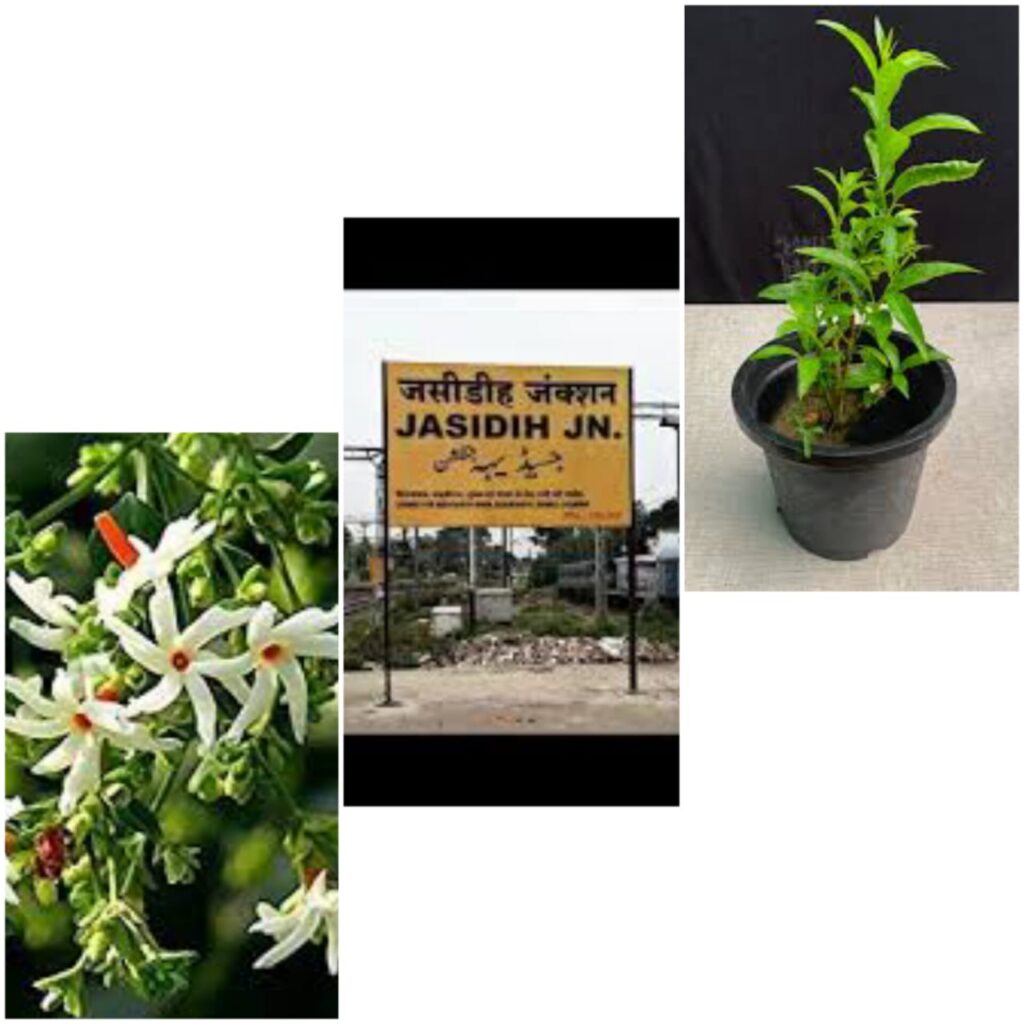I am a sucker for deliciously scented flowers. If I smell a floral scent drifting in the air, I pause and seek its source. Thus, l came to be acquainted with Mogra (Arabian Jasmine) Honey Suckle (Madhobilata), Tuberose (Nishigandha) and the like. There’s another of its kind I fell in love with during a stay at Aarogya Bhavan in Jasidih, now a part of the state of Jharkhand.
Our journey to Jasidih became uncertain when the morning Toofan Express in which we had reservations was cancelled an hour before its scheduled departure. Our stay for a few days at Aarogya Bhavan was already booked. So, a few hours later, we boarded another train and arrived at Jasidih quite late in the evening.
Upon our arrival, we found the Iron Gate was locked from inside. After repeated knocks, someone opened the gate and said that the office staff had left for the day; thus, there was no one to supply us the mandatory mosquito net and the pillows. But next morning we forgot all about our nightly woes looking at the garden, parts of which were visible from the room itself.
It’s a large complex. There are rooms of different categories, from modest to costly. At the centre stood a flourishing garden comprising both flower plants and fruit trees, a Badminton Court alongside. Fruits like ripe papaya and custard apple were collected for selling to visitors. But we were always a trifle late reaching the corner where the day’s gatherings were lapped up in a trice.
In the afternoon we went outside the complex to a snack shack specializing in Litti and masala tea. The tea served in an earthen cup was prepared with a mix of herbs ground together using a mortar and pestle by an elderly man. He was clad in a dhoti, a tilak on his forehead and he squatted on a raised wooden platform, the sacred thread worn over his left shoulder. Our order was served by another person. I found every tourist present there ordering seconds.
As the evening descended the garden area came alive. I joined a motley group of visitors. While accompanying a gentleman who was recuperating from a surgery, a perfume, thick and intense, made me giddy with excitement, but I could not make out which shrub was releasing such an intoxicating odour. Looking at my wonderment, my companion took me inside the garden, plucked a few tiny flowers from a shrub and said: “Take this and rub them on your palm. The scent will remain with you till the morning and you will sleep like a log!” I did this and had a deep, dreamless sleep. Until then I had not come across a raat ki rani plant (Night Blooming Jasmine / Queen of the Night). Almost a decade and a half after the visit, in our small balcony facing east, on an iron structure extended from the boundary grill we have recently placed a few pots carrying mainly a few scented flower plants among which stands a raat ki rani. The potted variety, perfume-wise, is less intense than the one in Aarogya Bhavan, but the gorgeous whiff that washes over me every time I open the door is something I savour.
